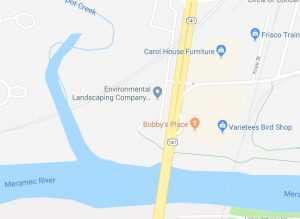Working with a St. Louis Landscaping Expert
Developing a Landscaping Plan
Beautiful landscaping benefits a home owner in so many ways.
Aesthetic value can be accomplished in multiple ways – by enhancing an outdoor area, creating new space(s) to enjoy, or screening unattractive parts of your property. From a practical standpoint, proper landscaping can save you time and expense in the future, such as using attractive ground cover on a steep hill to avoid mowing or to prevent future erosion. Low voltage lighting can also provide safety and security to a property in addition to looking great.
As we discussed in our last blog, a well-designed landscape has significant economic value too, increasing your home’s value by as must as 15% when it’s time to sell, and lowering your utility bills by that same percentage (or more) until then!
The idea of designing a home landscape can intimidate even the most serious gardeners. Working with a professional can help prevent costly mistakes, especially those that might not show up as problems until many year later.
You can scour landscape design books and websites for ideas, or tour other residential landscapes. Even a visit to the Missouri Botanical Garden or someplace similar can provide inspiration to you! Just remember that the best examples to build from are usually ones that are nearby, since climate dictates what will work best on your property.
Consulting with an expert in your geographic area is recommended when developing your outdoor spaces for this reason. At Environmental Landscaping, we’ve been working in the St. Louis region (including metro Illinois and Jefferson county) since 1970.
Developing a landscaping plan is much easier if you obtain a map that shows the property lines and the house’s location on the property first. This may be a plat, a deed map, the architect/builder’s plans, or a topographical plan with contour lines showing the site’s elevation.
The map may already include the fixed structures and hardscape of your property; if not you should do some outdoor measurements and add them yourself. This refers to the house itself and also driveways, sidewalks, patios or decks, fences, walls and other fixtures.
Depending on where you live, a plat may have been included in the papers you acquired when you purchased your home. If not, you may be able to obtain it from the assessor’s office. While you’re there, request copies of any local ordinances regarding easements, height restrictions, building codes or other regulations that could impact your landscaping project too.
If you have difficulty verifying your property lines, you may need to call a registered land surveyor to locate and verify your property boundaries. This can cost up to about $500 depending on location, but this is a crucial step when new fencing is part of your landscaping design.
Give us a call today at (636) 225-3848 or contact us online and let’s discuss your unique project needs today!
We look forward to talking with you soon,
Tory Catanzaro
Owner, Environmental Landscaping








